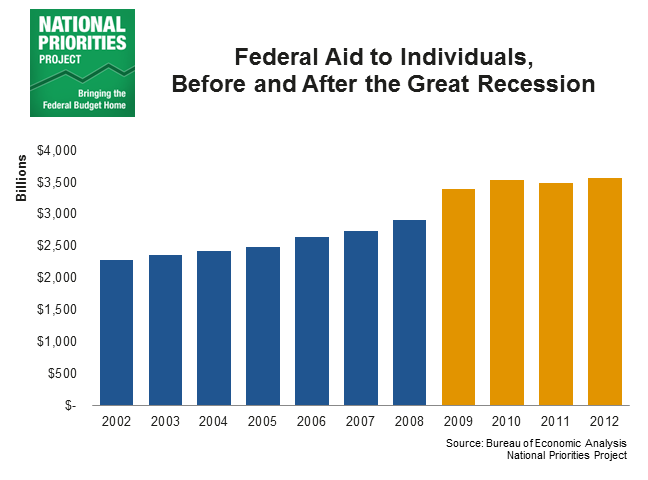State Smart: Federal Aid to Individuals in Your State
By
Lindsay Koshgarian
Posted:
|
Social Insurance, Earned Benefits, & Safety Net,
Transparency & Data

How does the federal government touch the lives of people in your state and your community? This week, leading up to the release of NPP’s new State Smart feature that shows you how the federal government works in your state, we’re releasing new data showing federal aid to individuals in all 50 states.
From California’s agricultural Central Valley to cities like Detroit and Washington, DC, to coal mining towns in Appalachia, federal aid to individuals touches communities in many ways:
- After decades of hard work, our parents, grandparents, and most of us will benefit from the guaranteed basic income provided to retirees by Social Security.
- When recessions and layoffs hit neighborhoods around the country, unemployment insurance stands between our friends and neighbors and financial disaster.
- When good jobs are scarce and local food pantries struggle to keep up with demand, food stamps (SNAP) provide access to nutritious food for children and families who are struggling to make ends meet.
Here’s what the data show:
- Federal aid to individuals is a way of planning for the worst. In the Great Recession, federal aid to individuals jumped 23 percent from 2007 to 2009, providing unemployment insurance, food stamps and other aid to those unlucky enough to have been hit hardest.
- Federal aid to individuals demonstrates our nation’s commitment to taking care of seniors after a lifetime of hard work. Florida has a reputation as a home to retirees, but lesser-known examples like Pennsylvania, West Virginia, Maine and Rhode Island all rank in the top ten for both oldest population, and the highest per capita (per person) federal aid to individuals.
To learn more about social security and unemployment insurance before the November 4 election, check out our themed Voter’s Guides. To see details about federal aid to your states, click through to our federal aid to individuals map.